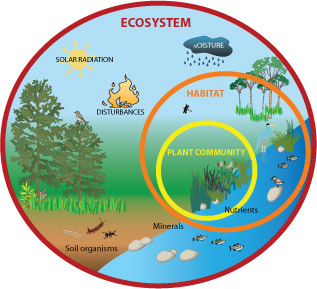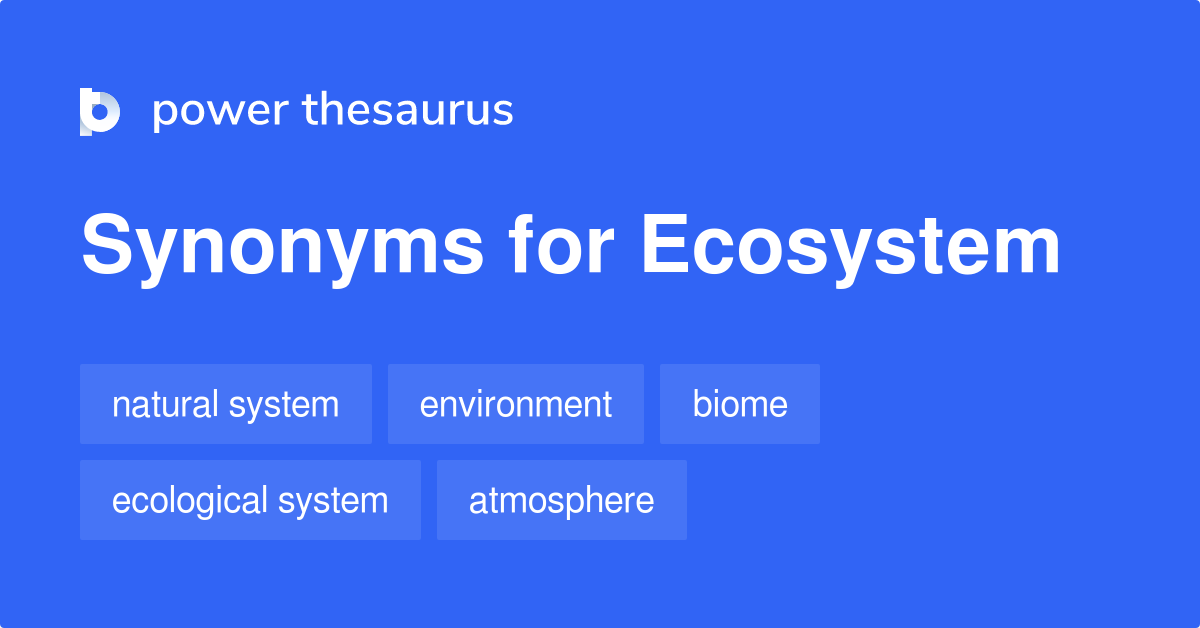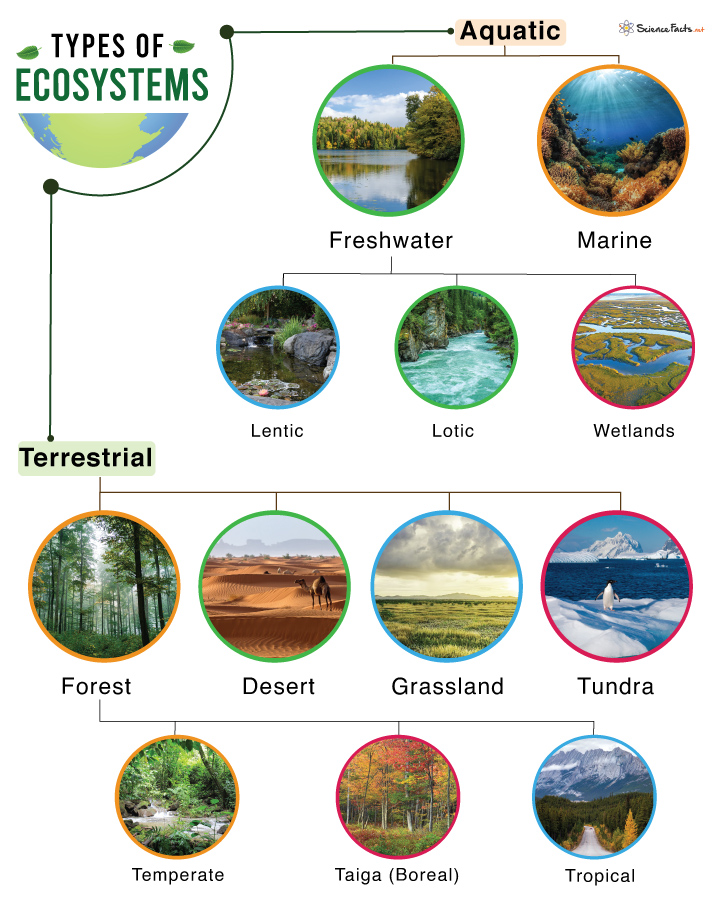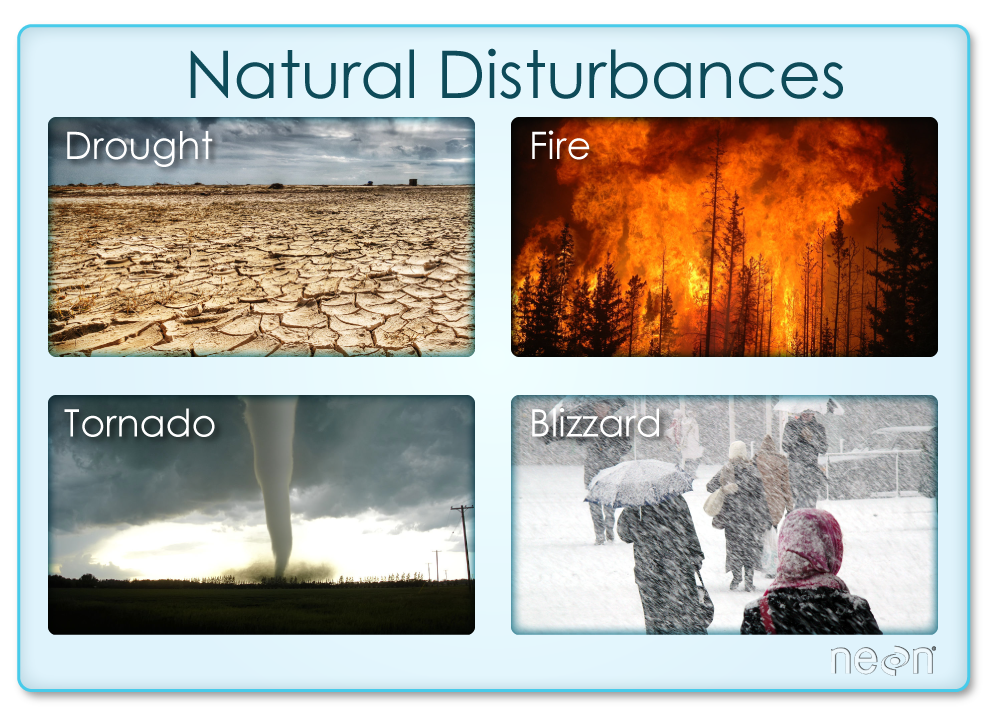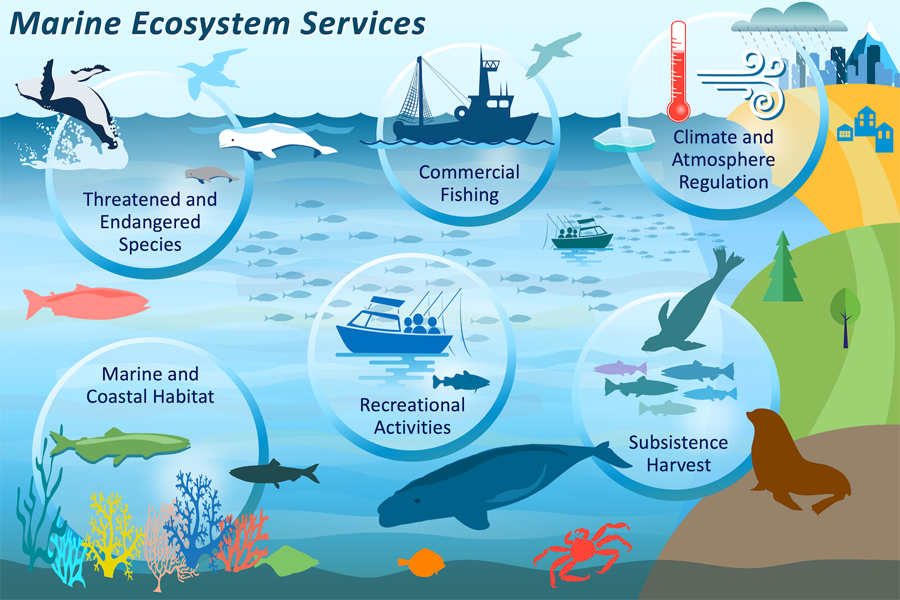Topic what does ecosystem mean in science: Discover the essence of ecosystems in science, exploring how interconnected life forms and environments sustain biodiversity and influence our planet"s health and future.
Table of Content
- What are the key components and interactions in an ecosystem according to science?
- Definition and Importance of Ecosystems
- Components of an Ecosystem: Biotic and Abiotic Factors
- Types of Ecosystems: Terrestrial, Aquatic, and Marine
- Energy Flow and Nutrient Cycles in Ecosystems
- Interactions Within an Ecosystem: Predation, Competition, and Symbiosis
- YOUTUBE: What Is An Ecosystem?
- Ecosystem Services: Benefits to Humans and the Environment
- Conservation and Threats to Ecosystems
- Restoration Ecology: Rebuilding Damaged Ecosystems
- The Role of Climate Change in Ecosystem Dynamics
What are the key components and interactions in an ecosystem according to science?
An ecosystem is a complex system composed of various components that interact with each other. According to science, the key components and interactions in an ecosystem can be described as follows:
- Abiotic Factors: These are non-living components of an ecosystem that influence living organisms. They include factors like temperature, sunlight, water availability, soil composition, and atmospheric conditions.
- Producers (Autotrophs): Producers are organisms that can produce their own food through photosynthesis or chemosynthesis. They convert energy from the sun (or other sources) into organic compounds that can be used by other organisms.
-
Consumers (Heterotrophs): Consumers are organisms that cannot produce their own food and rely on consuming other organisms for energy. They can be categorized into different trophic levels based on their feeding habits.
- Primary consumers (herbivores) feed directly on producers.
- Secondary consumers (carnivores) feed on primary consumers.
- Tertiary consumers (top carnivores) feed on secondary consumers.
- Detritivores and decomposers break down dead organic matter for energy.
- Decomposers: Decomposers play a vital role in an ecosystem by breaking down dead plants and animals into simpler components. They include fungi, bacteria, and other microorganisms that recycle nutrients back into the environment.
- Energy Flow: Energy flows through an ecosystem in a trophic structure. Producers capture solar energy and convert it into chemical energy, which is then passed on to consumers through the consumption of other organisms. The transfer of energy is unidirectional and follows the laws of thermodynamics.
-
Interactions: Different organisms within an ecosystem interact with each other in various ways, forming intricate relationships. Some common interactions include:
- Predation: Where one organism hunts and feeds on another for energy.
- Competition: When organisms compete for limited resources such as food, water, or territory.
- Symbiosis: Mutualistic, commensal, or parasitic relationships where organisms live in close association with each other.
- Feedback Loops: Ecosystems are dynamic and self-regulating systems. Feedback loops help maintain balance within the ecosystem. For example, the abundance of prey can affect the population of predators, which, in turn, influences the prey population.
Overall, an ecosystem represents the intricate web of interactions and dependencies between living organisms and their environment, shaping the natural world we observe.
READ MORE:
Definition and Importance of Ecosystems
An ecosystem in science refers to a community of living organisms in conjunction with the nonliving components of their environment, interacting as a system. These biotic and abiotic elements are interconnected in a complex web of relationships that enable the flow of energy and cycling of nutrients, sustaining life on Earth.
The importance of ecosystems cannot be overstated. They provide essential services that support life, including purifying water, pollinating crops, decomposing waste, regulating climate, and fostering biodiversity. Healthy ecosystems are crucial for the wellbeing of all species, including humans, offering resilience against environmental changes and disasters.
- Supports biodiversity by providing various habitats.
- Regulates the climate and mitigates extreme weather events.
- Filters water, purifying it naturally.
- Sequesters carbon, helping to mitigate climate change.
- Provides recreational, cultural, and spiritual benefits.
Understanding and preserving ecosystems is vital for maintaining the balance of nature and ensuring a sustainable future for the next generations.

Components of an Ecosystem: Biotic and Abiotic Factors
Ecosystems are comprised of biotic and abiotic components that interact in complex ways. Biotic factors include all living organisms within the ecosystem, from the smallest bacteria to large mammals and plants. Abiotic factors are the non-living elements that influence the living organisms, such as sunlight, temperature, soil, water, and air.
- Biotic Factors: These are the living parts of an ecosystem, including plants, animals, fungi, and microorganisms. They are categorized by their roles within the ecosystem, such as producers, consumers, and decomposers.
- Abiotic Factors: These include physical and chemical elements like climate, water bodies, minerals, sunlight, and atmospheric gases. Abiotic factors determine the types and survival of organisms in an ecosystem.
Both biotic and abiotic factors are essential for the survival of ecosystems. They work together to create a balanced environment that supports a diverse range of life forms. The interaction between these factors determines the health and productivity of the ecosystem, influencing everything from local biodiversity to global climate patterns.
Types of Ecosystems: Terrestrial, Aquatic, and Marine
Ecosystems on Earth vary widely due to differences in climate, geography, and other factors, and can broadly be classified into terrestrial, aquatic, and marine ecosystems. Each type supports unique habitats and life forms, contributing to the planet"s biodiversity.
- Terrestrial Ecosystems: These are found on land and include forests, grasslands, deserts, and tundra. Terrestrial ecosystems are characterized by the type of vegetation they support, which in turn depends on temperature, soil type, and the amount of rainfall.
- Aquatic Ecosystems: Aquatic ecosystems cover water bodies like lakes, rivers, and wetlands. Freshwater ecosystems are crucial for the water cycle and provide habitat for a diverse range of species.
- Marine Ecosystems: These encompass oceanic and sea areas and are distinguished by their saline water. Marine ecosystems, including coral reefs, mangroves, and open ocean, are vital for global biodiversity and influence the Earth"s climate.
Understanding the different types of ecosystems and how they function is crucial for conservation efforts, as each ecosystem plays a unique role in the Earth"s environmental balance, supporting a wide array of life forms and ecological functions.

Energy Flow and Nutrient Cycles in Ecosystems
The flow of energy and cycling of nutrients are fundamental processes that drive the functioning of ecosystems. Energy flows through an ecosystem in a one-way stream, from the sun to producers and then to consumers and decomposers. Nutrient cycles, on the other hand, recycle essential elements like carbon, nitrogen, and phosphorus through the biotic and abiotic components of the ecosystem.
- Energy Flow: Sunlight is the primary source of energy for most ecosystems, captured by producers (autotrophs) through photosynthesis. This energy then passes through the ecosystem via consumers (heterotrophs), including herbivores, carnivores, and omnivores, and finally to decomposers, which break down dead organisms, releasing nutrients back into the environment.
- Nutrient Cycles: Nutrients are constantly recycled in ecosystems. The carbon cycle involves the exchange of carbon among the atmosphere, organisms, and the earth. The nitrogen cycle is vital for protein synthesis and involves atmospheric nitrogen being fixed by bacteria into a form that plants can use. The phosphorus cycle moves phosphorus from rocks through the ecosystem, essential for DNA and ATP.
Understanding energy flow and nutrient cycles is crucial for grasping how ecosystems function and sustain life, highlighting the interconnectedness of all components within the ecosystem. These cycles ensure that ecosystems can support life over time, despite the one-way flow of energy.
Interactions Within an Ecosystem: Predation, Competition, and Symbiosis
Interactions within an ecosystem are crucial for the maintenance of balance and the survival of species. These interactions include predation, competition, and symbiosis, each playing a unique role in ecosystem dynamics.
- Predation: This is a relationship where one organism, the predator, hunts and eats another organism, the prey. Predation controls the population of species, contributing to ecological balance.
- Competition: Competition occurs when organisms vie for the same resources, such as food, water, or territory. It can happen within a species (intraspecific competition) or between different species (interspecific competition), influencing the distribution and abundance of species.
- Symbiosis: Symbiotic relationships involve close interactions between different species that live together. These can be beneficial to both organisms (mutualism), beneficial to one while not harming the other (commensalism), or beneficial to one at the expense of the other (parasitism).
These interactions are fundamental for the development and sustainability of ecosystems, shaping the structure and function of the community. Understanding these relationships helps us appreciate the complexity and resilience of ecosystems.

What Is An Ecosystem?
\"Explore the wonders of nature\'s intricate and balanced ecosystem in this captivating video. Witness the harmonious interactions between plants, animals, and the environment that make our planet thrive. Discover the importance of preserving and protecting this delicate web of life.\"
Ecosystem Services: Benefits to Humans and the Environment
Ecosystem services are the vast array of benefits that ecosystems provide to humanity, supporting our survival and quality of life. These services are often taken for granted but are crucial for our well-being and the health of our planet. They can be categorized into four main types: provisioning services, regulating services, cultural services, and supporting services.
Provisioning Services
- Food production: Ecosystems supply the raw materials for crops, livestock, fish, and other food sources, directly sustaining human nutrition and culinary traditions.
- Water resources: Natural landscapes filter and supply water for drinking, agriculture, and sanitation.
- Raw materials: Forests, wetlands, and other ecosystems provide timber, fiber, fuel, and medicinal resources.
Regulating Services
- Climate regulation: Vegetation and oceans act as carbon sinks, playing a key role in controlling the global climate by sequestering carbon dioxide.
- Flood control: Wetlands and forests regulate water flow, reducing the risk and severity of floods.
- Disease regulation: Healthy ecosystems can control the spread of certain diseases by supporting a variety of species that limit populations of disease carriers.
- Pollination: Insects, birds, and bats provide essential pollination services for many crops and wild plants, supporting agriculture and natural biodiversity.
Cultural Services
- Recreational and aesthetic benefits: Natural areas offer spaces for leisure, tourism, and spiritual enrichment, enhancing mental and physical health.
- Educational resources: Ecosystems are living laboratories for learning about the natural world and our place within it.
- Cultural heritage: Many societies place spiritual and historical significance on landscapes and species, contributing to their cultural identity and continuity.
Supporting Services
- Nutrient cycling: Ecosystems recycle nutrients essential for plant growth and soil fertility, supporting all life forms.
- Soil formation and erosion control: The processes of soil formation and preservation are vital for agriculture and natural vegetation.
- Photosynthesis: The fundamental process by which plants produce oxygen and food, crucial for most life on Earth.
- Habitat provision: Natural habitats support diverse species by providing shelter and breeding grounds, maintaining biodiversity.
Ecosystem services are integral to the resilience of our planet and society. They underline the necessity of conserving and restoring ecosystems to ensure these services continue to support future generations. Recognizing the value of ecosystem services is critical in making informed decisions about environmental management and sustainability.
What is an Ecosystem?
\"Embark on a thrilling journey of scientific discovery with this mesmerizing video. Unleash your curiosity as you delve into the realms of physics, chemistry, biology, and more. Prepare to be amazed by groundbreaking experiments, mind-boggling facts, and the endless possibilities of science.\"
Conservation and Threats to Ecosystems
Ecosystem conservation is critical for maintaining the balance and health of our planet. It involves protecting natural habitats, preserving biodiversity, and ensuring the sustainable management of natural resources. However, ecosystems worldwide face numerous threats that can lead to their degradation and loss, impacting biodiversity and the services ecosystems provide to humanity.
Major Threats to Ecosystems
- Habitat destruction: Deforestation, urban expansion, agriculture, and mining activities lead to the loss of natural habitats for many species.
- Pollution: Air, water, and soil pollution from industrial, agricultural, and urban sources can severely affect ecosystems" health and biodiversity.
- Climate change: Rising temperatures, changing precipitation patterns, and increased frequency of extreme weather events disrupt ecosystems and species" ability to adapt.
- Overexploitation: Unsustainable fishing, hunting, and logging practices deplete resources faster than they can be replenished, leading to population declines and extinction.
- Invasive species: Non-native species introduced to new environments can outcompete, prey on, or bring diseases to native species, disrupting ecological balances.
Conservation Strategies
- Protected areas: Establishing national parks, wildlife reserves, and marine protected areas to conserve critical habitats and species.
- Sustainable resource management: Implementing practices that allow for the use of natural resources while ensuring their long-term viability.
- Restoration projects: Rehabilitating degraded ecosystems to restore their ecological functions and services.
- Climate action: Reducing greenhouse gas emissions and promoting adaptation strategies to mitigate the impacts of climate change on ecosystems.
- Community involvement: Engaging local communities in conservation efforts to ensure sustainable practices and protect their natural heritage.
Conservation efforts are essential to counteract the threats to ecosystems and ensure their preservation for future generations. By understanding and mitigating these threats, we can safeguard the biodiversity and ecological services vital to our survival and well-being.

Restoration Ecology: Rebuilding Damaged Ecosystems
Restoration ecology is a scientific field focused on the recovery of degraded, damaged, or destroyed ecosystems. The objective is to return the ecosystem as closely as possible to its original state, enhancing biodiversity, ecological services, and resilience. This process involves a series of steps tailored to each unique ecosystem, with the aim of reestablishing the structures and functions that allow the ecosystem to sustain itself over time.
Key Principles of Restoration Ecology
- Understanding historical conditions: Researching the ecosystem"s original state before disturbance to guide restoration efforts.
- Active intervention: Employing techniques such as replanting native vegetation, removing invasive species, and reintroducing native fauna.
- Passive restoration: Allowing nature to recover on its own, which can be effective in areas where the original ecosystem can regenerate if disturbances are removed.
- Monitoring and adaptation: Continuously monitoring the restored ecosystem and adapting management strategies based on ecological feedback.
Restoration Techniques
- Reforestation and afforestation: Planting native trees to recover forest ecosystems and increase carbon sequestration.
- Wetland restoration: Rehydrating dried-up wetlands, reconstructing water flow patterns, and reintroducing plant and animal species to restore biodiversity.
- Stream and river restoration: Modifying or removing dams, reshaping riverbanks, and restoring natural water flow to improve water quality and habitat connectivity.
- Soil rehabilitation: Enhancing soil health through organic amendments, erosion control, and the reintroduction of microorganisms and plants for soil stability and fertility.
- Pollinator habitat creation: Developing habitats specifically designed to support bees, butterflies, and other pollinators critical for plant reproduction.
Restoration ecology plays a vital role in combatting environmental degradation, climate change, and biodiversity loss. Through careful planning and execution, damaged ecosystems can be rehabilitated, providing renewed resources for human use, habitat for species, and contributing to the overall health of the planet.
READ MORE:
The Role of Climate Change in Ecosystem Dynamics
Climate change is significantly altering ecosystem dynamics worldwide, affecting biodiversity, species distributions, and the services ecosystems provide to humanity. These changes are driven by increases in global temperatures, altered precipitation patterns, and more frequent and severe extreme weather events. Understanding the impact of climate change on ecosystems is crucial for developing strategies to mitigate its effects and adapt to new ecological realities.
Impacts of Climate Change on Ecosystems
- Shifts in species distribution: As temperatures rise, many species are moving to higher altitudes or latitudes in search of more suitable climate conditions, altering community compositions.
- Changes in phenology: Climate change affects the timing of biological events, such as flowering, migration, and breeding, potentially disrupting ecological interactions.
- Increased vulnerability to invasive species: Warmer temperatures can favor invasive species over native ones, leading to shifts in ecosystem structure and function.
- Altered ecosystem services: Changes in ecosystems can impact the provisioning, regulating, cultural, and supporting services they provide, affecting water supply, food production, and disease regulation.
Adapting to Climate Change
- Conservation and restoration efforts: Protecting and restoring habitats can enhance ecosystem resilience to climate change, providing refuges for species and maintaining biodiversity.
- Climate-smart agriculture: Developing and implementing farming practices that reduce greenhouse gas emissions and are resilient to climate variability.
- Integrated water resource management: Adapting to changes in water availability through sustainable management practices can help maintain ecosystem services.
- Urban planning and green infrastructure: Designing cities to incorporate natural elements and green spaces can mitigate urban heat island effects and support urban biodiversity.
The role of climate change in ecosystem dynamics underscores the need for global cooperation and action to reduce greenhouse gas emissions and implement adaptive management strategies. By understanding and addressing the ecological impacts of climate change, we can work towards sustaining biodiversity and ecosystem services for future generations.
